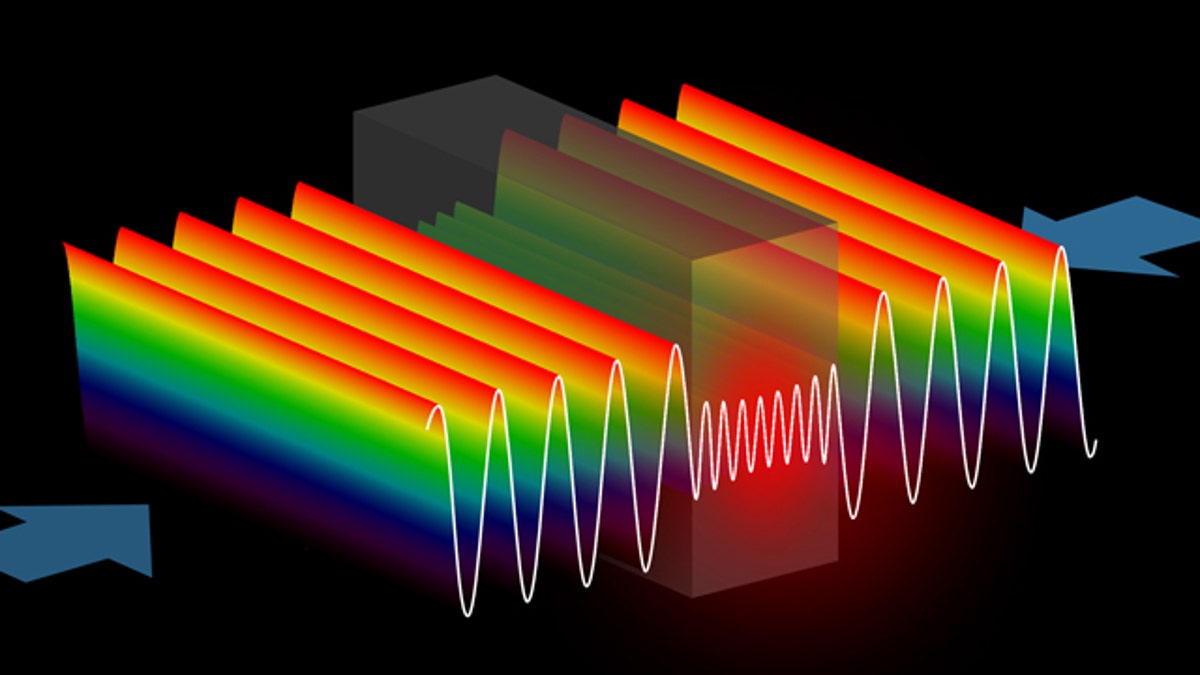
In the anti-laser, incoming light waves are trapped in a cavity where they bounce back and forth until they are eventually absorbed. Their energy is dissipated as heat. (Yidong Chong/Yale University)
Dear James Bond: The next time a laser beam threatens to cut you in two, try switching it into reverse.
Two scientists at Yale University have built the laser’s first doppelganger: the anti-laser. While a conventional laser emits a constant beam of light in one direction, the anti-laser simply does the opposite. It takes that same steady light stream and interacts with it in such a way that it absorbs and cancels out the light. And scientists hope the strange creation could help the fight against cancer.
A. Douglas Stone, one of the two researchers behind the project, said he came up with the idea for a “nega-laser” when working with equations for a random laser with his partner in crime, Hui Cao.
“I figured, if we just somehow illuminated the cavity, and replaced the gain medium with something that tends to absorb light, we could essentially reverse the process,” Stone told FoxNews.com.
Need a translation? A simple laser -- patented by Bell Labs in 1960 -- can be broken down into three main parts: A resonator, usually consisting of mirrors to trap and direct light, a gain medium, which aids in amplifying the light, and a power source to run it all.
To making the opposite of this light-directing device, Stone turned the gain medium into what he referred to as a “loss medium.” Instead of emitting light, the loss medium takes light it in, and absorbs it. Sounds easy, right? But Stone said it took them almost a year to perfect the system.
“For about four months it just wasn’t working,” Stone told FoxNews.com. “Part of the problem is that all experiments just have certain imperfections that the theory doesn’t have. But we kept at it, because no one had really done anything like this before. And now that it works, it should be very easy to recreate.”
Stone and other physicists call the anti-laser a coherent perfect absorber (CPA). The say the laser was one of the defining technological innovations of the past century. So could this anti-laser, this CPA, have just as much impact on society’s future?
Stone says we may see the integration of his technology into a few systems later on down the road, such as optical switches in hybrid computer chips. But one possibility is even more impressive: The anti-laser could eventually aid in cancer therapy, going a bit further than technology at doctors’ disposal today.
“With our method, you might be able to get light in the center of a medium for therapeutic or radiological application,” Stone told FoxNews.com. “Already, radiation for cancer does something like this but uses a different principal. And it can only shrink tumors near the surface of the skin. But in our case, CPAs may be able to reach a bit deeper.”
Stone says science of that magnitude is purely speculative at this point, but he’s not counting out any possibilities of what this discovery could mean for future generations.
“In my career, I’ve seen many things that I thought would never work … work. So you never know,” he said.
